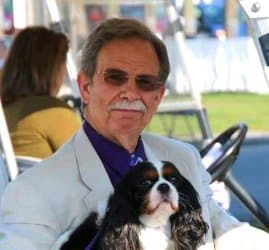
Home » The Cavalier King Charles Spaniel – One Judge’s Approach
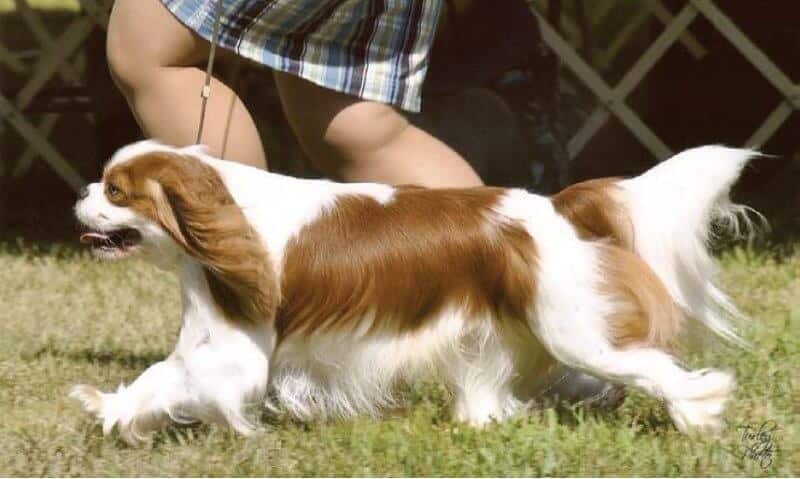
There are three words that should come to mind when describing our breed: Friendly, Elegant, and Graceful.
The “must haves” for a Cavalier King Charles Spaniel are fairly simple. If not for its beautiful head and expression, coupled with a gay, active, and friendly demeanor, the Cavalier would be a generic spaniel.
The Cavalier Breed Standard makes this clear in describing that the tail shall be “in constant motion when the dog is in action.” This illustrates the happy nature of our breed.
When approaching a Cavalier, you want to be met by a sweet, melting expression. This comes from large, dark brown, lustrous eyes set well apart and with good cushioning under those eyes. While the skull is slightly rounded, the ears, when alert, should appear to flatten the skull as they fan forward to frame the face. This adds to the expression. The muzzle completes the picture and should be broad, slightly tapering, and the bite should be scissors. For me, a level bite is acceptable if it does not detract from the overall appearance. An undershot is a no-no!
A judge must remember the roots of the Cavalier King Charles Spaniel and its history. This is not an English Toy Spaniel or “Charlie,” which is a delightful breed in its own right. Remember that it was Roswell Eldridge (an American) who, in 1926, sought to re-establish the breed as depicted in the seventeenth- and eighteenth-century paintings. Those dogs were depicted as having a “Long face, no stop, flat skull, not inclined to be domed and with the spot in the center of the skull.” A Cavalier must not appear to have a domed skull or deep stop.
A Cavalier King Charles Spaniel must have good depth of chest, nice prosternum, and proper layback of front assembly with matching rear. This assembly will provide proper reach and drive with a level side gait and correct, level tail carriage to complete the picture.
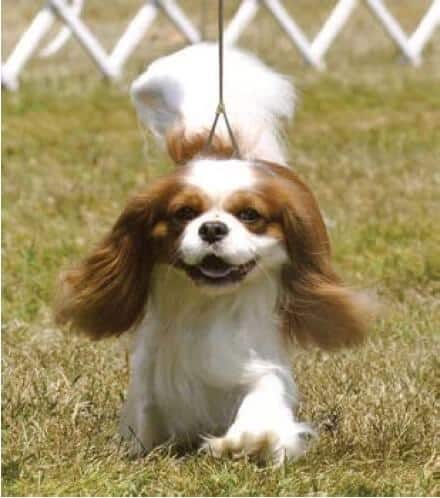
While Cavalier breeders strive for a nice layback of shoulders (40-45 degrees), the reality is that many specimens are more upright. This will be apparent both on the table and as soon as you watch side gait. I love to see a front reach extending to the point of the nose. Similarly, the rear angulation should match to balance the dog, and once again, movement will expose correct or incorrect structure.
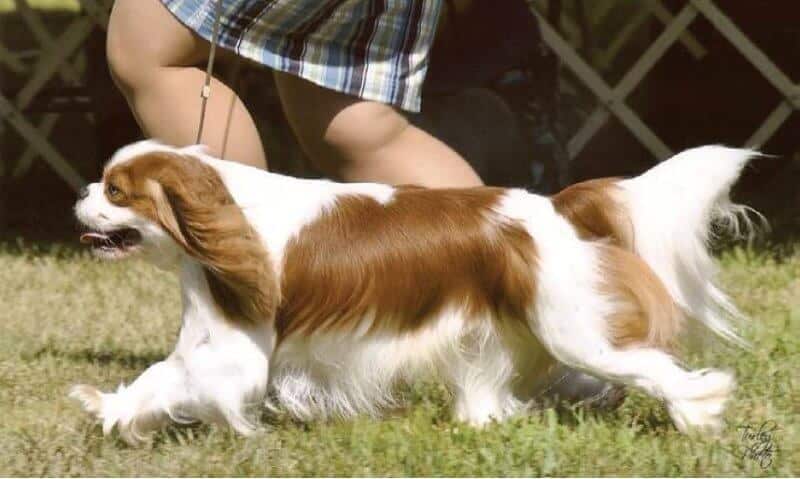
There are many good to excellent specimens in the ring today and the breed continues to improve. I do, however, see some issues. With popularity comes large numbers. With large numbers comes some disparity. The Cavalier is a Toy Spaniel, and I am concerned when I see some very large or coarse specimens winning. The Cavalier is a “moderate” dog, and anything overdone should be avoided, whether it is size, coat, bone, heads, or eyes. An important issue to Cavalier breeders concerns the eyes. A tiny amount of white in the inner corner may be acceptable, but white around the eye is unacceptable. Similarly, light brown eyes ruin the warm Cavalier expression.
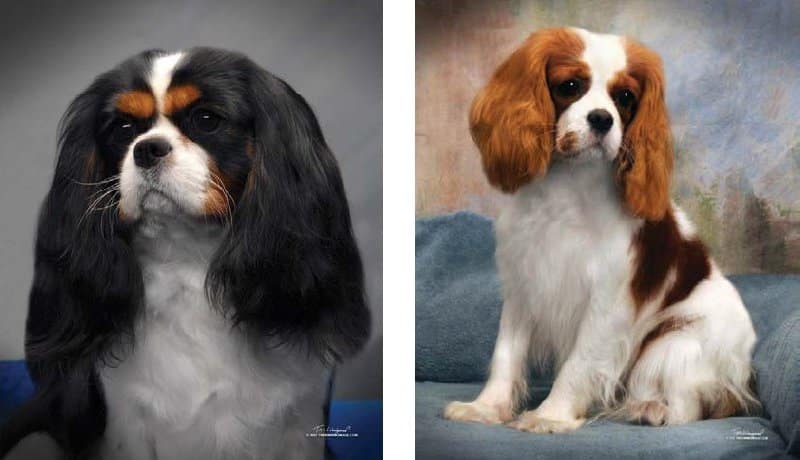
The manner in which Cavaliers are being exhibited is also important. The Cavalier is a natural breed, with many accomplished owner-handlers and professionals in the ring. I am concerned that excessive grooming, sculpting, and trimming, plus an over-abundance of coat, are becoming all too common.
The ACKCSC reminds judges in their education program: “Specimens where the coat has been altered by trimming, clipping, or by artificial means shall be so severely penalized as to be effectively eliminated from competition.”
I need to remind judges that there are only four acceptable colors for the Cavalier King Charles Spaniel:
All other colors are to be disqualified.
This is made clear in the recent revision to our Standard. Like so many other breeds, colors outside our accepted four may be accompanied by health concerns attributable to the gene pool.
Finally, an issue which is extremely important to our breed and to the sport relates to Junior Handlers. The Cavalier is to be shown naturally and free-stacked. The American Cavalier King Charles Spaniel Club is proud of our Junior Handlers, our program, and their accomplishments. A Juniors Judge should never ask a Junior Handler to hard-stack their exhibit. This is incorrect and our Juniors know better.
Showsight Magazine is the only publication to offer dedicated Digital Breed Magazines for ALL recognized AKC Breeds.
Read and learn more about the Cavalier King Charles Spaniel dog breed with articles and information in our Cavalier King Charles Spaniel Breed Magazine.
Error embedding FlippingBook shortcode, please check the flipbook url. (https://digital.showsightmagazine.com/view/862490/)
If you enjoy the Cavalier King Charles Spaniel Breed Magazine, help us educate the community by sharing it.
